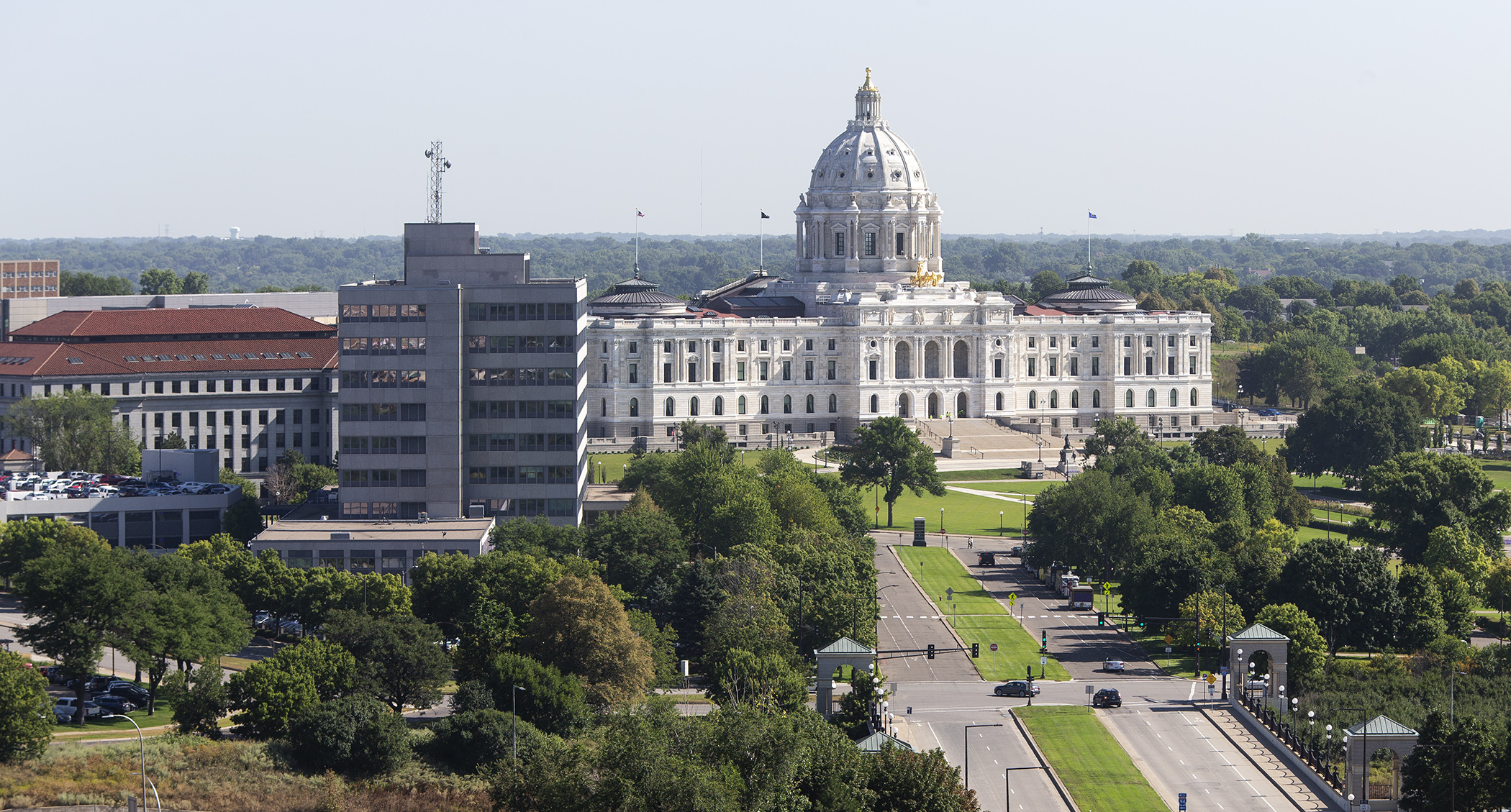Open space relocation, building demolition could be among changes coming to State Capitol area

It has been more than three decades since the design framework for Capitol Area has been updated.
Fast-forward to today, a $6 million plan has been proffered to look toward future tomorrows in the 60-block locale.
Approved, as amended, late Tuesday by the House State and Local Government Finance and Policy Committee, HF2427 would appropriate $1 million the current fiscal year to update the Capitol Complex framework and $5 million in fiscal year 2024 for implementation. Work is planned to begin in summer 2024 with the planting of trees
Sponsored by Rep. Ginny Klevorn (DFL-Plymouth), the bill’s next stop is the House Economic Development Finance and Policy Committee. The governor’s latest budget proposal includes the dollars.
The Capitol Area Architectural and Planning Board is responsible for planning, land use and design of public and private space within the area.
“Cass Gilbert’s vision for the Minnesota Capitol focused on the Capitol building as a center point for the city, framed by large green spaces, connected to neighborhoods in all directions and providing direct vistas from near and far,” said Merritt Clapp-Smith, executive secretary for the Capitol Area Architectural and Planning Board. “Over time the campus plan has been updated as the city developed and redeveloped but we’ve kept the tradition of a central lawn and connected open space. The most recent plan is 30 years old and in desperate need of updates.”
[MORE: View the CAPPB presentation]
The board has a no net-loss policy when it comes to open space; therefore, the most dynamic change in preliminary plans calls for two new open spaces — on the southwest and northeast corners of Rice Street and University Avenue — to replace the area in Leif Erickson Park that’ll be lost by expansion of the State Office Building.
On that latter land now is the state-owned Ford Building, which may be part of future development; however, the Administration Department has requested funds to demolish the long-empty structure.
“This really envisions a new building that would be in that place,” Clapp-Smith said.
Whatever is built, it must be a mixed-use development with ground space identified for locally owned businesses, who’ll likely rent the space.
A Capitol Area Vitality Task Force would also be established to “consider and develop recommendations for the administration, program plan, and oversight of the Capitol Area community vitality account established by this act.” Instituted with $5 million in fiscal year 2024, the account would be used to improve livability, economic health, and safety in the Capitol Area.
Related Articles
Search Session Daily
Advanced Search OptionsPriority Dailies
Speaker Emerita Melissa Hortman, husband killed in attack
By HPIS Staff House Speaker Emerita Melissa Hortman (DFL-Brooklyn Park) and her husband, Mark, were fatally shot in their home early Saturday morning.
Gov. Tim Walz announced the news dur...
House Speaker Emerita Melissa Hortman (DFL-Brooklyn Park) and her husband, Mark, were fatally shot in their home early Saturday morning.
Gov. Tim Walz announced the news dur...
Lawmakers deliver budget bills to governor's desk in one-day special session
By Mike Cook About that talk of needing all 21 hours left in a legislative day to complete a special session?
House members were more than up to the challenge Monday. Beginning at 10 a.m...
About that talk of needing all 21 hours left in a legislative day to complete a special session?
House members were more than up to the challenge Monday. Beginning at 10 a.m...